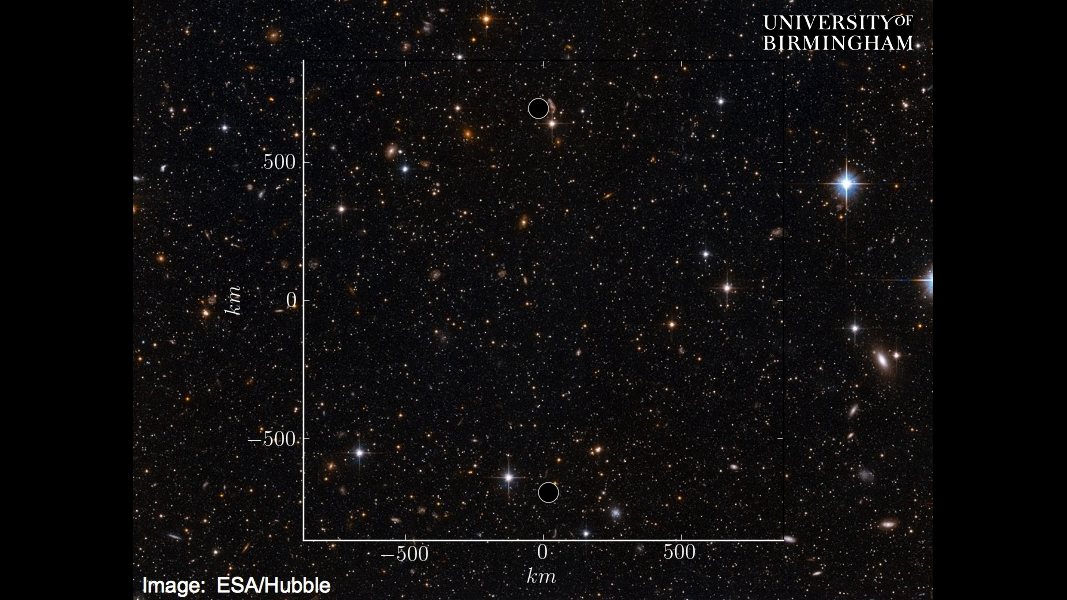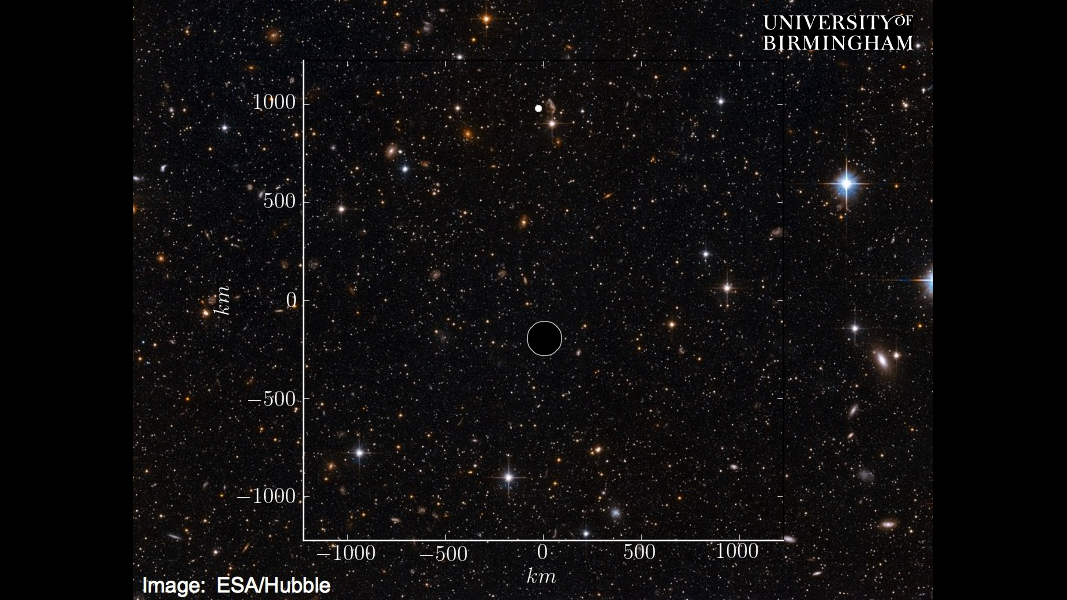What are we looking for?
Length of the Signal
The frequency a compact binary coalescence will reach before merger is inversely proportional to the mass of the binary. The ground based interferometers are only sensitive to Gravitational Wave frequencies above 10 Hz, we can't detect the signal while its frequency is less than this. This means that the duration of the detectable signal varies depending on the mass of the binary. Below is an animation of the coalescence of a binary Black Hole with masses equal to ten times that of our Sun. The animation starts when the Gravitational Wave frequency is 10Hz. (The orbital motion is slowed by 20 times to allow us to view it clearly.)
This is a similar coalescence, this time one of the objects is a Neutron Star with mass twice that of our sun.
As seen in these animations, the lower mass binary reaches higher frequencies before merger, meaning its detectable gravitational wave signal has a longer duration.

